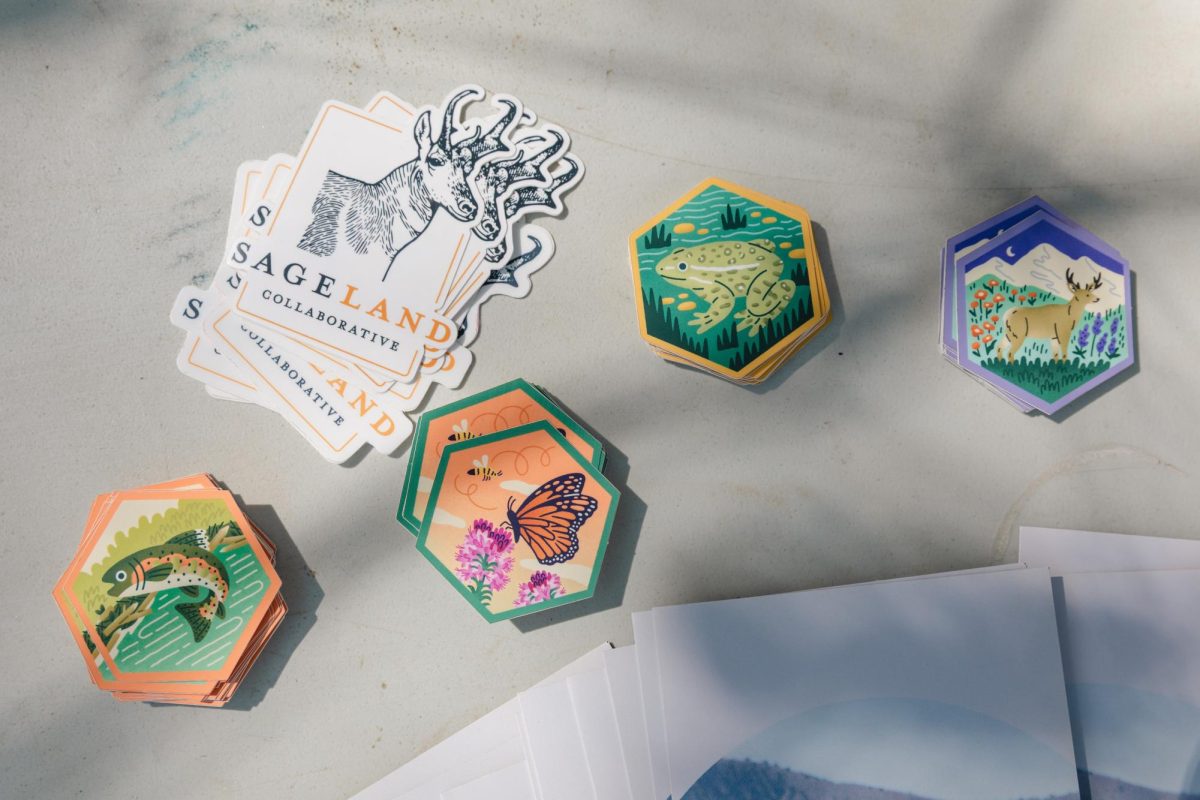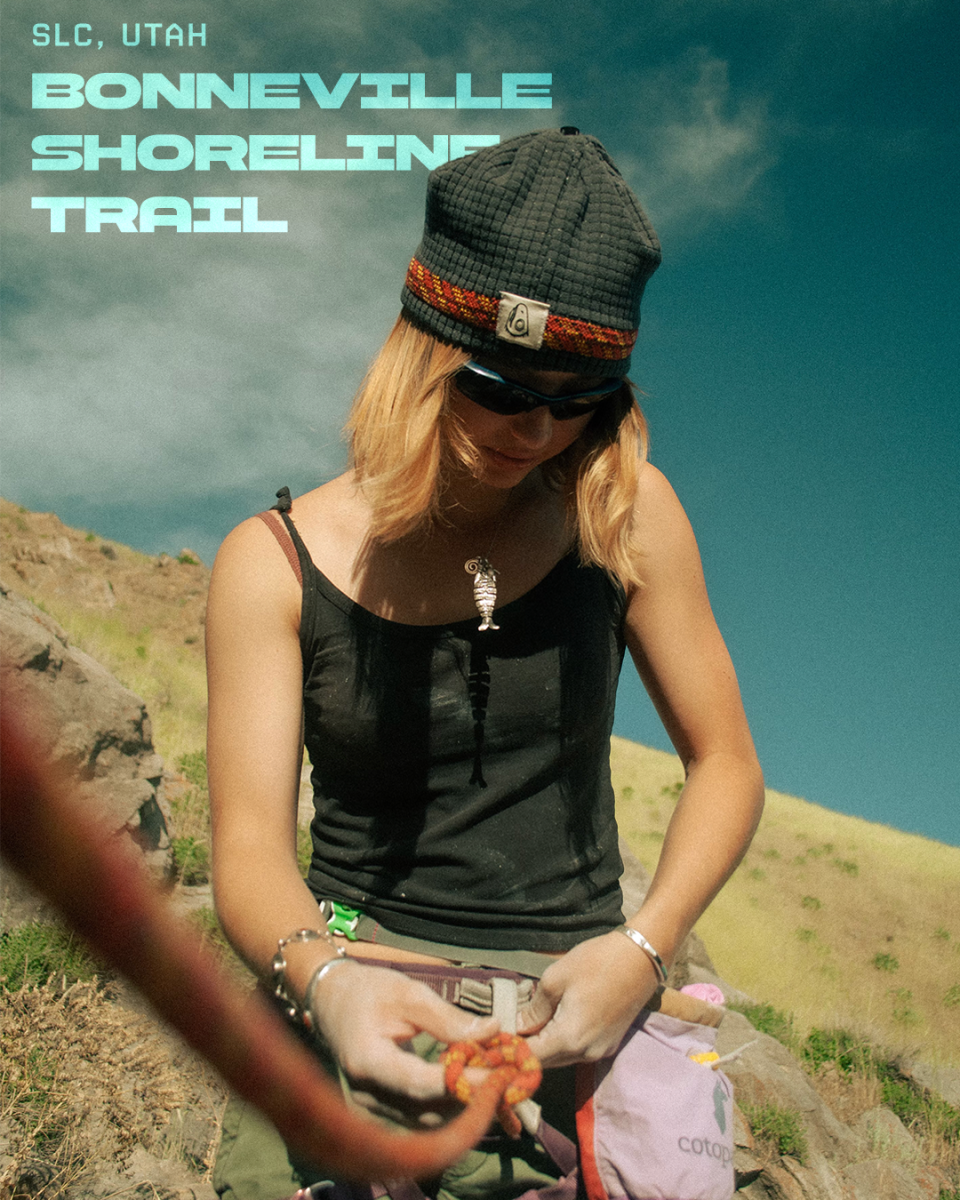Plastics in the Environment
May 2, 2021
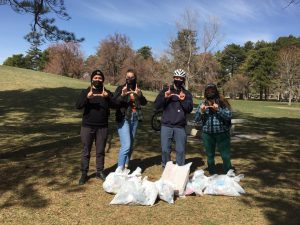
This past March, I attended a two-day virtual symposium hosted by the Wallace Stegner Center here at the University of Utah. The symposium had a central focus on plastics in our lives and was aptly named the “Plastics Paradox: Societal Boon or Environmental Bane.” Altogether there were a few dozen speakers, ranging from all sorts of backgrounds and prominent universities, gathered virtually to present the scientific literature on plastics. Those participating ranged from college professors of law to professors of chemical and biomolecular engineering, and environmental scientists to the Vice President of Governmental Affairs at the Plastics Industry Association. To put it simply, these people were highly credible and their knowledge on the topic of plastics in relation to their own specialty was prodigious.
Over the following days of intriguing lectures and open discussion, there was so much covered that I can not possibly summarize it all. Rather I aim to highlight the main takeaways of the symposium and pass on the real-life actions that were suggested by the speakers.
The Harmless Aspect of the Familiar
Renowned biologist, author and conservationist Rachel Carson is widely credited for igniting the environmental movement during the 1960s after having published her book Silent Spring. Despite the tremendous progress inspired by this book towards banning a few popular synthetic chemicals – including dichloro-diphenyl-trichloroethane, commonly known as “DDT” – that were adversely affecting human and wildlife populations, there still exist a plethora of similarly toxic chemicals that are commonly produced and sold without warning of their endocrine disrupting properties, carcinogenic profile, and life-altering neurological impacts. Plastics are an unfortunately abundant example of such, as they are both a hazardous and unavoidable product of contemporary society.
As Rachel Carson once said,
Hazards that are universally common or repetitive assume the harmless aspect of the familiar.
The ubiquity of plastic around the globe, in spite of the science that marks them hazardous, has so far made plastic no outlier to her observation.
The Scientific Perspective on Plastics
According to the environmental health speakers at the symposium, Carmen Messerlian, from the Harvard T.H. Chan School of Public Health, and Dr. Scott M. Belcher, from the Toxicology Program at NC State University, exposure to plastics is scientifically accepted as a pathological route to illness, from both direct exposure to plastic polymers and the myriad toxins that sorb to plastics. The lifespan of plastic in the environment is on the order of 400 years or more. As a result, many organisms come into contact with plastic. Biological tissue concentrates plastic and sorbed toxins, a process called ‘bioaccumulation’. For example, a predatory fish will accumulate more plastics and other toxins through the consumption of smaller fish because they are consuming the plastics that persist in the body of their prey in addition to plastics in the water. Because of this transfer between trophic levels, scientists and doctors have long recommended the consumption of smaller fish over larger ones, to avoid a diet full of heavy metals. The same advice is now being recommended to avoid excessive consumption of microplastics, or plastic less than 5 mm in diameter that easily makes its way into bodily tissues and organs.
No one is exempt from plastic pollution, regardless of status or location. According to guest lecturer Br’ette Vanhouten, the average American eats or drinks around 5 grams of microplastic per week. Messerlian says this exposure to plastics adversely affects endocrine, immune, neurologic, epigenetic, genetic, and metabolic systems. Notably, the health consequences are major threats to reproduction, in humans and animals alike. Therefore, as a professor of environmental reproductive, perinatal, and pediatric epidemiology, Messerlian suggests couples should limit their exposure to plastics whenever possible.
At the end of Carmen Messerlian and Dr. Belchers’ environmental health lectures, they were asked to make a closing statement and voice their recommendations for individual avoidance of plastics. Messerlian’s response was the following,
Anytime you store your food in plastic there is going to be some leaching. I would consider this a significant route of exposure. Anytime you are dealing with food you want to avoid handling plastics, that should be a general rule of thumb, minimizing your contact with plastic in your kitchen.
I would not put plastic clothes on my children or myself. Waterproof, UV proof [and] wrinkle proof materials have harmful plastics. Stick to organic clothing, avoid plastics in food; Plastic with heat is terrible; glass water bottles [are a temporary solution]; Don’t trust the chemical industry in protecting your health; The minimalist approach is often the safest route.
It is overwhelming… Each and everyone of us has a choice as a consumer, as a consumer you have tremendous power… be a critical consumer, and a questionable consumer, be cautious and careful with what you consume, try to stay as close to nature as possible.
Dr. Belcher’s closing statement focused on bottom-up education, and top-down inclusion of science in the decision-making,
Advocate for a precautionary approach, look at the EU’s approach and regulate on a class-based approach; [There must be] additional safety testing, no plastic has been proven to be safe; Improve science literacy; Industry needs to be held accountable, scientists should work with industry; This is frustrating from a scientific point of view; Science is hard, biology is complex, doubt is easy, if we can do anything better it is to trust scientists.
Brainstorming solutions and planning the attack
At the end of the symposium the speakers were gathered, one by one in their virtual rooms, to answer a live audience Q&A with just under one-hundred attendees present. While answering questions, the speakers were taken down a rabbit-hole of introspection on the topic, one that they had clearly been down before, but now traveled with new insights provided by the diverse background of their peers. The result was a passionate conversation on how to create a plastic-free environment.
Chris Bell, the Waste & Recycling Division Director for the Sustainability Department of Salt Lake City suggested,
[We] design something responsibly for end of life; There’s finally a demand signal that is requiring post-consumer content; We are not going to recycle our way out of this; With more education and awareness we can build some outrage, putting the cost back on the folks who are the source.
Dr. Rolf Halden, director of the Center for Environmental Health Engineering at ASU’s Biodesign Institute, said,
This is not the time for incremental change; Where is the outrage? There’s no logic in it; We are tinkering with our life support system right now; We have to be more ambitious in our dreams here; The tool of shaming, you cannot underestimate its power… do it everyday and I think you can get results much quicker. [We need] better labeling [to] show the consequences of a product during advertisements, similar to cigarettes and medicines; Do not buy into the false narrative of recycling, it is all downcycling.
Robert Alder, Professor of Law at the University of Utah, discussed End-Product Responsibility (EPR) and the need for mandatory life-cycle analysis,
If you manufacture something you should have responsibility for what happens to it post-use.
Nedra Chandler, Associate Director of the Environmental Dispute Resolution Program at the University of Utah College of Law and facilitator of the discussion, spoke to the discouragement many are feeling,
It would be a lot easier to change my behavior if I knew there was a chance that we could get somewhere new.
Alan Eastman, Professor at the University of Utah and Cofounder of GreenFire Energy, talked about the importance of viewing everyone as an individual stakeholder with their own self-interests,
What people care about is, how is this going to affect me in my life; The message we present to people should reach more to the heart than to the head; Businesses respond to what people buy; Packaging is clearly the first target; Start labeling the effects of the plastics we use, especially in packaging.
The Imperfect Environmentalist
After attending the ‘Plastics Paradox’ symposium, I began to look at plastic differently and was immediately overwhelmed by all the plastic in my home. The first thing I did was sort through my clothes. I had already made a donation pile the week before, but I now was adding all the polyester, nylon and synthetic fiber I owned to the pile. Messerlian had said that epidermal transmission is a significant route of exposure and I worried we were all too late.
It was Rachel Carson’s “harmless aspect of the familiar,” that was really getting to me. Why can’t we all just listen to the science? Dr. Belcher had said that we should trust scientists and that scientists should work with industry. I believe he was right – how else are we supposed to attend to the root causes of our industrial mistakes? Like Rolf had said during his closing statement, we can not expect the ones who got us into this mess to get us out of it.
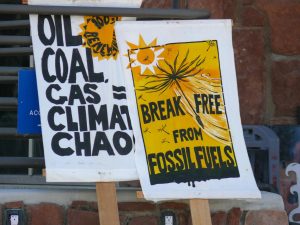
My immediate reaction to anthropogenic existential threats has always been anger, frustration and a need for someone to blame. I want to shame out of existence those corporations who have the power to change but resist doing so no matter the harm they know they are committing. I refuse to level with the oil and gas industry that is manufacturing plastics at the expense of our environmental health and livelihood and then telling us to recycle their products and not be wasteful. According to the speakers, half of all the plastics ever produced have been generated in the last 15 years alone. Only 9% of those plastics have been recycled, around 12% were
incinerated, and 79% are sitting in landfills. No wonder so many found it frustrating that the oil and gas industry still chooses to devolve the authority of plastic waste on the consumer rather than consider a life-cycle analysis approach or End Product Responsibility (EPR) program that takes into account what happens to their product post-consumer use. This end-use responsibility should be the manufacturers not the individuals.
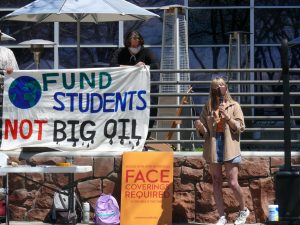
As I rode my bicycle to the donation center and dropped off my plastic-infused clothing, I remembered that non-organic cotton itself is often sprayed with pesticides and thus carries its own caveat of problems. I thought back to Messerlian’s recommendation to stay as close to nature as possible when consuming and wished that I had never bought all the material objects and non-organic clothing that I owned. If only I learned this in high school or junior high. Having less has always provided me an ironically fulfilling feeling, so maybe the minimalist approach is the best way to go. At least until industry figures out how to manage all parts of the life-cycle of their product, without adversely affecting the climate or environmental health.
The following week myself and a few other students hosted a cleanup event at Liberty Park, here in Salt Lake City. The cleanup lasted just 3 hours of the day and between the dozen who showed up, we collected 15 lbs of trash, much of which was plastic. As we left the park with our bags of post-consumer waste, we saw still more trash on the ground, and so discussed doing another cleanup in the near future.
I must say that though some frustration does naturally come up when one heightens their ecological awareness, there is also much gratitude in knowing what is going on. After all, my hope in sharing this is not to discourage or scare you out of action, but to motivate you to make the same connections and act on the science that you learn. Doing something is better than doing nothing. As the Zero Waste Chef Anna-Marie Bonneau says,
We don’t need a handful of people doing zero waste perfectly. We need millions of people doing it imperfectly.
If and when you choose to begin your own zero-waste journey, I suggest you avoid perfection and find motivation in the science behind your endeavor. But if you are ever feeling lost, here is a book that may act as a friendly guide:


